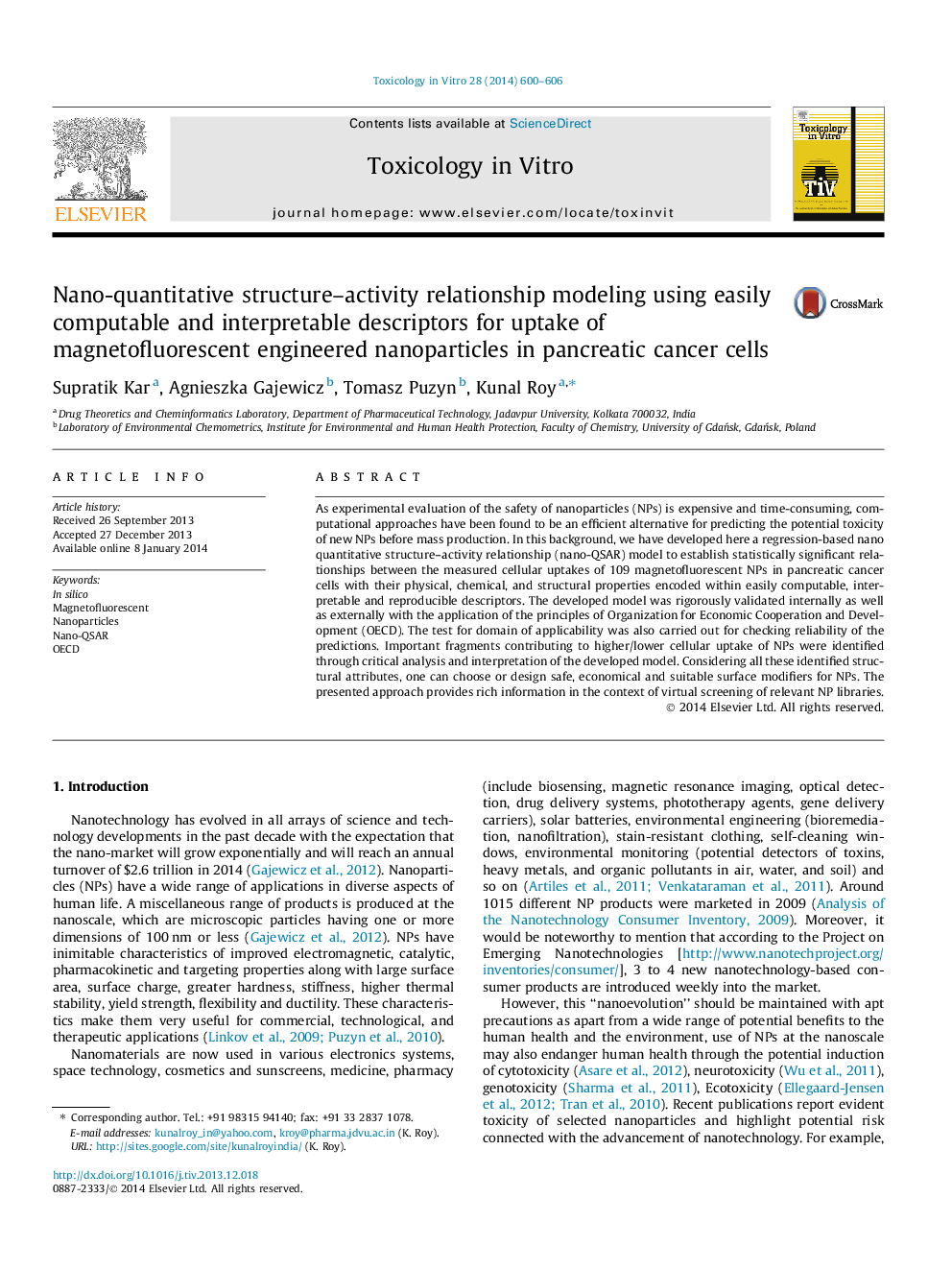| Article ID | Journal | Published Year | Pages | File Type |
|---|---|---|---|---|
| 5862074 | Toxicology in Vitro | 2014 | 7 Pages |
â¢Nanotechnology has become one of the most promising areas of human venture.â¢Notable toxicity of nanoparticles to living organisms and ecosystem has been found.â¢Here, a nano-QSAR model has been constructed with easily computable descriptors.â¢Important fragments contributing to cellular uptake of nanoparticles were identified.â¢This model will provide useful information for screening of nanoparticle libraries.
As experimental evaluation of the safety of nanoparticles (NPs) is expensive and time-consuming, computational approaches have been found to be an efficient alternative for predicting the potential toxicity of new NPs before mass production. In this background, we have developed here a regression-based nano quantitative structure-activity relationship (nano-QSAR) model to establish statistically significant relationships between the measured cellular uptakes of 109 magnetofluorescent NPs in pancreatic cancer cells with their physical, chemical, and structural properties encoded within easily computable, interpretable and reproducible descriptors. The developed model was rigorously validated internally as well as externally with the application of the principles of Organization for Economic Cooperation and Development (OECD). The test for domain of applicability was also carried out for checking reliability of the predictions. Important fragments contributing to higher/lower cellular uptake of NPs were identified through critical analysis and interpretation of the developed model. Considering all these identified structural attributes, one can choose or design safe, economical and suitable surface modifiers for NPs. The presented approach provides rich information in the context of virtual screening of relevant NP libraries.
